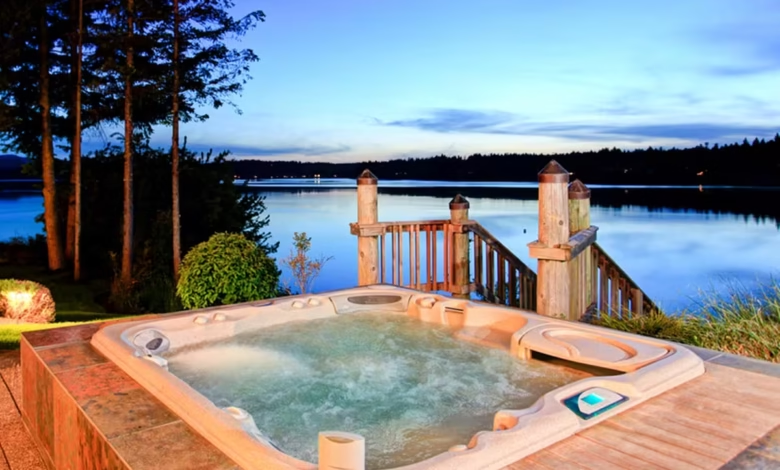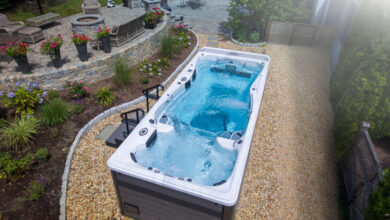Hot Tub Cost Factors Every Canadian Homeowner Should Consider

Are you thinking about adding a spa to your backyard? Before making the investment, it’s important to understand the total hot tub cost. Many buyers look only at the purchase price, but the real expense goes far beyond the number on the sales tag.
From setup to long-term upkeep, each element shapes how much value your hot tub delivers over time. By looking at all the factors, Canadian homeowners can plan wisely and choose a model that balances comfort, performance, and affordability.
1. Purchase Price and Quality Differences
The first number most buyers focus on is the sticker price. Hot tubs vary widely depending on design, quality, and features.
- Entry-level models: More affordable upfront, but often built with simpler materials and fewer efficiency features.
- Mid-range models: A balance between comfort and performance, offering stronger jets, durable construction, and better insulation.
- Luxury models: High-end finishes, advanced hydrotherapy, and smart technology often come at a higher price but can deliver greater comfort and longevity.
It’s tempting to focus only on the purchase price. However, a lower upfront investment may lead to higher expenses over time.
2. Installation and Setup
Setting up your hot tub involves more than delivery. Common installation expenses include:
- Electrical connections: Most spas require a dedicated line installed by a licensed electrician.
- Site preparation: Whether it’s a reinforced deck, a concrete pad, or landscaping, a solid foundation is essential.
- Delivery logistics: Larger hot tubs may require special equipment or additional labour to place safely.
Factoring in these expenses upfront gives a clearer picture of the total hot tub cost.
3. Energy Efficiency and Operating Costs
In Canada’s colder climate, energy use can significantly affect your monthly budget. Hot tubs must maintain consistent water temperature even during freezing winters, making efficiency critical.
Look for:
- High-density insulation
- Energy-efficient pumps and heaters
- Well-sealed, durable covers
Although an energy-efficient hot tub may cost more initially, it will typically pay for itself in reduced utility bills over time.
4. Maintenance and Water Care
Keeping water clean and safe requires regular attention. Ongoing maintenance includes:
- Chemicals or saltwater systems
- Filters that need cleaning and replacement
- Test strips, cleaners, and other supplies
Some homeowners handle these tasks themselves, while others prefer professional servicing. Either way, these recurring expenses should be considered part of the total hot tub cost.
5. Repairs and Replacement Parts
Over time, even a well-maintained spa will need occasional repairs, such as servicing or replacing pumps, heaters, or control panels. Choosing a reputable brand with strong construction can help minimize breakdowns, ensure parts are readily available, and make it easier to manage costs. Setting aside a small yearly repair budget also helps keep hot tub ownership more predictable.
6. Warranty and Service Coverage
Warranty protection is an often-overlooked factor that directly affects the overall hot tub cost. Strong warranties can cover labour and parts for years, while limited ones may only protect certain components. Evaluating the terms before purchase can help you avoid expensive out-of-pocket repairs.
7. Lifespan and Long-Term Value
A well-built hot tub can last 10 to 20 years, while a lower-cost model may need replacement sooner. Quality construction, durable materials, and reliable components often mean higher upfront pricing but lower lifetime cost. In other words, paying more at the start can actually save money over time.
8. Accessories and Enhancements
Finally, consider add-ons that improve safety and comfort:
- Steps, handrails, or cover lifters
- Lighting and sound systems
- Pergolas or gazebos for shelter
These extras aren’t essential but are worth including in your total budget if they enhance your experience.
Final Thoughts
Understanding hot tub cost means looking well beyond the initial expense. Purchase price, installation, energy use, maintenance, repairs, warranty coverage, lifespan, and even accessories all contribute to the actual value of ownership.
For Canadian homeowners, the key is to think in terms of price versus cost. A cheaper spa might save money upfront, but lead to higher expenses in energy, upkeep, and repairs. A well-constructed, efficient hot tub may require more investment at the start, but it will deliver greater comfort and lower long-term costs.
By considering every factor carefully, you’ll be better equipped to choose a hot tub that fits your budget today and continues to provide lasting relaxation, comfort, and value for years to come.




